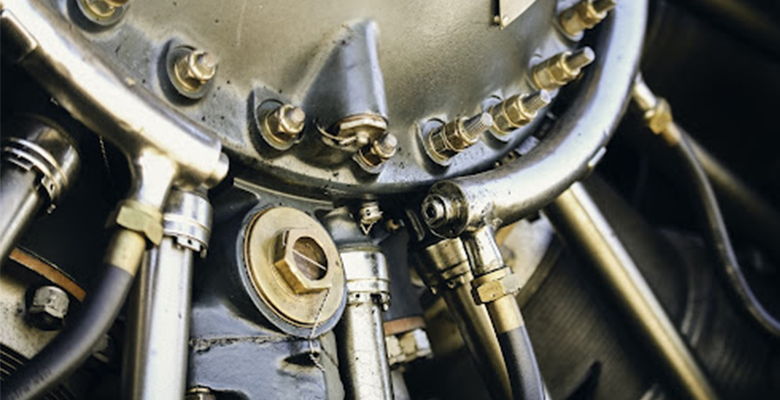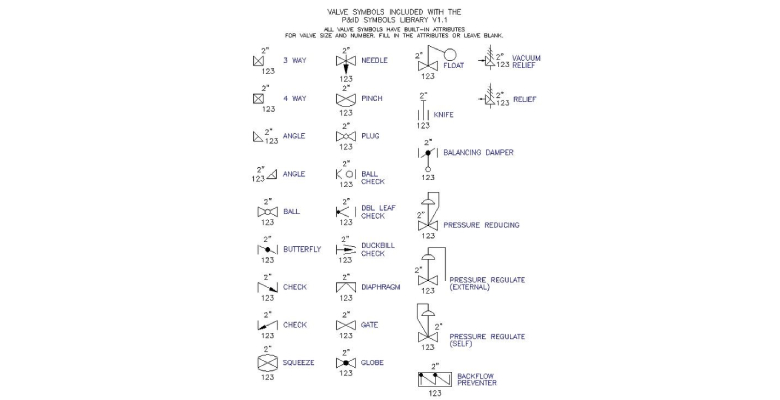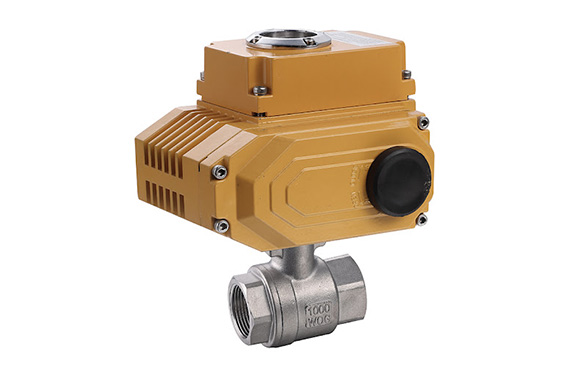Getting into the details of butterfly vs gate valve, we first need to understand what they are. The valves used in a plumbing system are one of the most important parts. Valves control liquid flow by enabling it to start and stop; they must be in good working order to avoid leaks and unintended flow.
Two of the most popular industrial valve types are the gate valve and the butterfly valve. There are many other varieties of valves that are accessible. These two have very distinct structural layouts, applications, and operating philosophies.
The gate valve belongs to the cut-off valve category and can only be used in completely open or fully closed positions; there is no provision for flow regulation. A fixed disc that circles around the stem of the valve shaft to open and close is the foundation of a butterfly valve sometimes referred to as a flap valve.
Here is a complete guide about butterfly valve vs gate valve.
What Is A Butterfly Valve
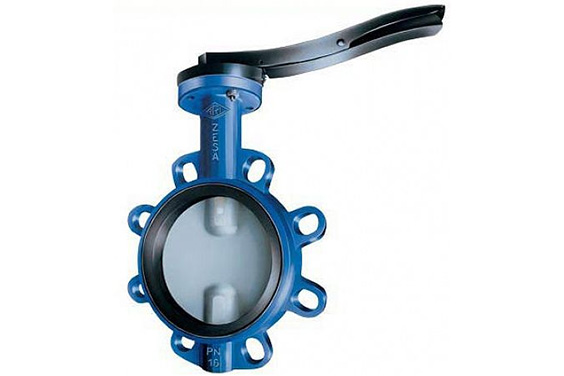
Pipeline flow can be stopped using butterfly valves, a form of a quarter-turn rotational motion valve. It is well knowledge that butterfly valves can be used to regulate flow. This is not advised, though, since it may damage the valve disc and jeopardize the sealing properties. Open and use of butterfly valves is straightforward.
Rotating the handle 90 degrees will close or open the valve entirely. Large Butterfly valves frequently have a gearbox, which uses gears to connect the handwheel and stem. The valve can now be operated more easily, but speed is sacrificed in the process.
These valves have a wide range of purposes, particularly in flow isolation, and are used in a wide range of process media and industries, including water supply, distribution, and the collection as well as pumping stations. Two of their main advantages over other valve families are ease of fabrication and compactness, which lead to lighter weight and less expensive final products with smaller installation footprints and faster actuation rates.
The butterfly valve with zero offsets, which depends on the rubber’s flexibility, has the lowest pressure rating. The high-performance double offset butterfly valve, which is used in systems with a little bit higher pressure, is offset from the centerlines of the body seal, the disc seat, and the bore (offset one, offset two).
This creates a cam motion during operation to elevate the seat out of the seal, resulting in less friction and a lower tendency to wear than the zero offset design. For high-pressure systems, the triple offset butterfly valve is the ideal valve.
This valve’s offset disc seat contact axis efficiently prevents sliding contact between the disc and the seat. In order to be machined to produce a bubble-tight shut-off when it comes into contact with the disc, the seat of a triple offset valve is made of metal.
Butterfly Valve Parts
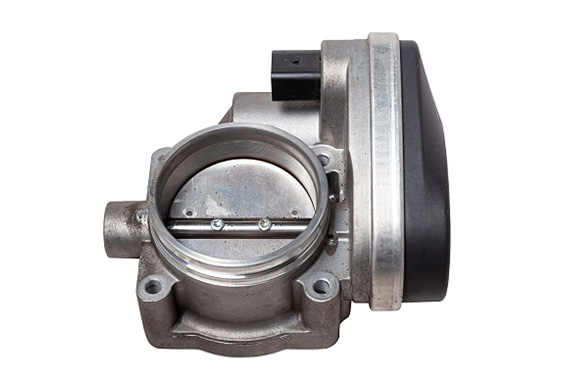
The body, disc, stem, and seat are the only four essential parts of a butterfly valve.
- Body
The bodies of butterfly valves typically slide between two pipe flanges. Lug and wafer body styles are the most popular. Bolt holes that match those in the pipe flange are provided by protruding lugs on the lug body. The lugs on a wafer body are not projecting. The pipe flanges and the wafer valve are sandwiched together, and the body is encircled by the flange bolts.
Every body type offers benefits. Compared to the lug style, the wafer style is more affordable. Wafer designs prevent the weight of the pipe system from passing through the valve body directly. A lug body enables the removal or service of downstream piping dead ends.
- Disk
The disc is a butterfly valve’s flow closing component. In an effort to increase flow, sealing, and/or operating torque, numerous modifications to the disc design have been made in relation to the orientation of the disc and stem.
A plug-in a plug valve, a gate in a gate valve, or a ball in a ball valve are analogous to the disc. The butterfly valve can be opened and closed by rotating the disc 90 degrees or one-quarter turn.
- Stem
The butterfly valve’s stem can be either a two-piece (split-stem) design or a one-piece shaft. In most resilient seated designs, the stem is shielded from the media, allowing for an effective material choice in terms of price and mechanical attributes.
The stems in high-performance designs must be compatible and have the necessary strength to seat and dislodge the disc from the seat since they come into touch with the media.
- Seat
A resilient-seat butterfly valve’s seat provides cutoff through an interference fit between the disc edge and the seat. Various elastomers or polymers can be used to make the seat’s material. The seat may be pushed or locked in, or it may be glued to the body.
An interference-fit seat design or a line-energized seat design, where the pressure in the pipeline is employed to increase interference between the seat and disc edge, may be used to achieve the shutoff in high-performance butterfly valves. Polytetrafluoroethylene (PTFE) or reinforced PTFE (RTFE) is the most used seat material due to its greater range of compatibility and temperature range.
High-performance butterfly valves can also be found with metal seats. These metal seats enable the use of a butterfly valve in temperatures up to 1,000 degrees Fahrenheit. There are fire-safe designs available that offer polymer seat valve shut down prior to a fire and metal seal backup shutoff during and after a fire.
Butterfly Valve Working Mechanism

A butterfly valve working principle is similar to a ball valve, enabling quick shutoff. Because they are less expensive than other types of valves and lighter and smaller, butterfly valves are preferred because they require less support. In the middle of the pipe is where the disc is located. The actuator on the valve’s outside is connected to the disc by a rod.
Rotating the actuator causes the disc to move perpendicular or parallel to the flow. Unlike a ball valve, the disc is always present in the flow and lowers pressure even while it is open. The quarter-turn valve family of valves includes butterfly valves.
The valve is fully open or closed when the disc is turned a quarter turn. Butterfly valves are capable of shutting off and permitting two-way flow. However, because they are not full-bore, they cannot be used for swabbing or pigging.
Butterfly Valve Applications
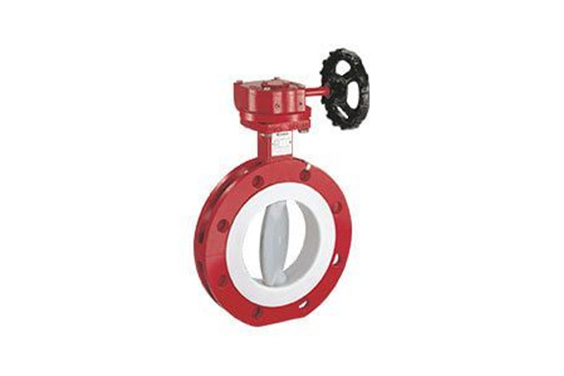
Let us now see the gate valve vs butterfly valve application. Industrial butterfly valves are more portable than gate valves, which makes them simpler to install and operate in circumstances involving wide pipe lengths. They are ideal for installations in restricted spaces, where wafer butterfly valves are suggested. In practice, butterfly valves are used more commonly in large sizes compared to gate valves.
Because they may be operated often and open and close quickly, butterfly valves are ideal for applications that call for emergency shutoffs. They are used for truncation as well as to change or throttle flow rates. Butterfly valves are the best choice for pipes carrying minute contaminants.
Since they can be utilized in conditions with moderate to high temperatures and pressure, butterfly valves are additionally referred to as high-performance valves.
Advantages Of Butterfly Valve
- Butterfly valves can be used to conveniently control and throttle fluid flows.
- Emergency shut-offs work perfectly with the short operation duration.
- They work well in applications with moderate to high pressures and temperatures.
- Due to their lightweight and compact shape, they require less installation space than gate valves.
- They are more cost-effective in bigger sizes as compared to gate valves.
Disadvantages Of Butterfly Valve
- The pipeline is obstructed by the materials left behind by butterfly valves.
- The thickness of the valve body creates resistance even when the valve is fully open, which impedes the medium flow and lowers pressure.
- The disc moves randomly, which causes flow turbulence to have an impact.
- Thick liquids may prevent the disc from moving because it is always present in the flow channel.
- These valves may experience water hammering.
What Is A Gate Valve
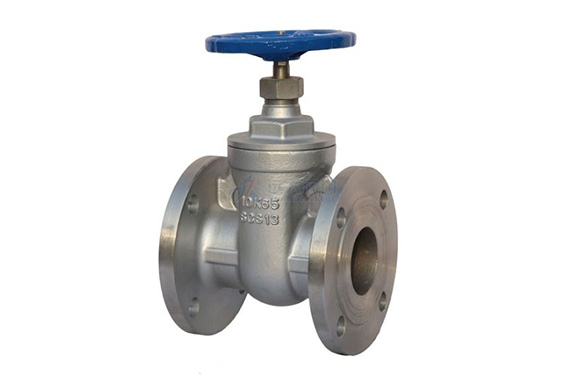
Between gate valve vs butterfly, how you can choose one depends on your needs and preferences. The gate valve is the most typical valve used in water delivery systems. It is a linear-motion isolation valve that has two different flow control settings. As partial opening can result in damage, these valves shouldn’t be used to regulate flow; instead, they should be used wholly open or completely closed.
The closing portion of the valve, which slides into the moving stream to cause shutdown and so serves as a gate, is where the name “gate valve” originated. Gate valves divert water flow across the pipeline and isolate particular sections of the water supply network for use in construction, maintenance, and repair work.
The gate valve is one of the most frequently utilized valves in use today due to its straightforward design and adaptability to be used in a variety of low-pressure-drop applications. Gate valves have full-port designs by design.
This indicates that the inner diameter of the connecting pipe and the valve port are both the same size. A full-bore gate valve allows fluid to travel through the pipeline without being impeded or generating a pressure decrease. As a result, utilizing a cleaning pig to clean the pipe is also made practicable.
Gate valves are frequently used with larger pipe diameters, ranging from 2′′ to the largest pipelines because they are less complicated to build than other large-size valves. Gate valves are available in a range of sizes, materials, pressure, temperature, and gate and bonnet designs. Although there are electric and pneumatic actuator gate valves, manual gate valves are more affordable because they are used less frequently.
Gate Valve Parts
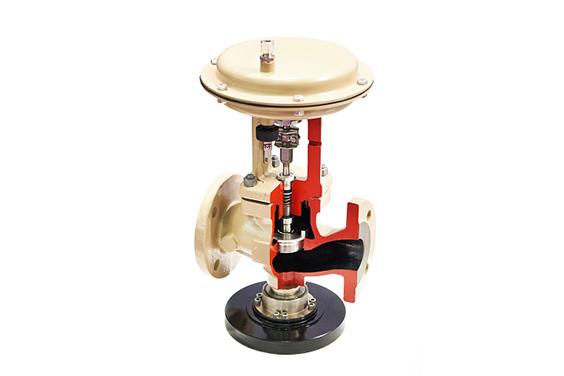
- Gate
The gate can be broadly categorized as parallel or wedge-shaped and is available in a variety of designs and technologies to ensure that it delivers effective sealing for a variety of applications. Slab gates, parallel expanding gates, and parallel slide gates are examples of parallel gates. Another form of a gate valve that has a construction very similar to wedge valves is the knife gate. These types are explained in the sections that follow.
- Seat
Two seats that carry out and guarantee the seal with the gate are included in the gate valve. Gate valve seats can either be a seat ring or built into the valve body. In the seat ring construction, seat rings are threaded into place or pressed into place before being sealed and welded to the valve body. The latter style of architecture is favored for higher temperature service. In contrast to pressed-in or threaded-in seats, which allow for more variance, integral seats are constructed from the same material as the valve body.
- Stem
A threaded stem is spun to raise and lower the gate. An actuator or manual wheel turns the stem. Based on the design, the stem is divided into two groups:
- Rising stem
- Non-rising stem
- Bonnets
A bonnet covers the internal components of a gate valve. It is fastened to the valve body using screws or bolts to create a leak-proof seal. It can therefore be taken out for upkeep or repairs. Depending on the application, gate valves might have pressure seal, union, screw-in, or bolt-in bonnets.
Gate Valve Working Mechanism
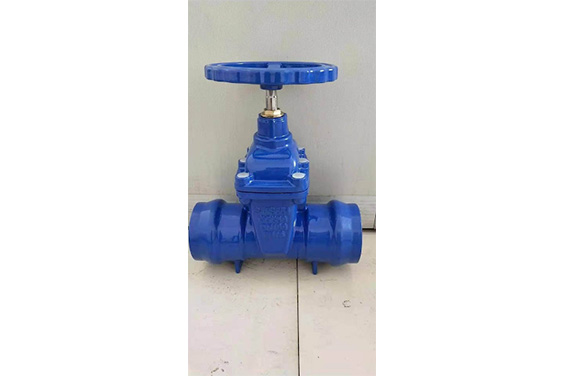
A gate controls the medium flow in a gate valve and hence you can choose between a butterfly vs gate valve for isolation. A gate is a sturdy disc, either rectangular or circular, affixed to a stem and used as a barrier. Gate valves are frequently operated by an actuator, such as a handwheel. An actuator receives rotational energy from a valve stem linked to it.
This energy transforms the threads of the valve stem into the gate when the gate valve is opened and the opposite is true when the gate valve is closed. As a result, the gate is moved upward or downward by this energy. Since it takes more than one 360° round to fully open or close, this valve is known as a multi-turn valve.
When the handle wheel is cranked clockwise, the stem and gate will move downward over the fluid flow line, and the gate will be snugly placed between the two seats. As a result, once the valve is completely closed, there will be no fluid leakage.
When the handle wheel is rotated anticlockwise, the stem and gate rise across the fluid flow line, and the valve opens from its closed position, allowing fluid to flow through the gate valve. There will be no or very little restriction to the flow of fluid when the gate valve is fully open.
The largest variations in the relationship between a gate valve’s vertical movement and flow rate occur close to a shutdown. The gate valve can also be used in a semi-open position, although doing so will cause gate erosion because the gate will be impacted by a fluid moving at a reasonably high velocity.
Therefore, the gate valve should operate in either a fully closed or fully open state. Gate valves are frequently installed in parts of a pipeline where they will no longer be open or closed for long periods of time because they need time to transition between these two states.
Gate Valve Applications

Gate valves are widely used in pipelines that need tight sealing but don’t require frequent switching since they have good sealing properties. Since accurate control is not possible, they can only be used in the fully open or fully closed states and cannot be used to control or throttle the medium flow rate.
The valve’s seat and the gate will quickly deteriorate if it is maintained partially or halfway open. The chattering wedge will make noise and produce vibrations in the pipeline.
The gate valve is also unsuitable for pipelines that need emergency shutoffs due to its delayed opening and closing processes. When comparing gate valves to butterfly valves, gate valves can endure higher pressures along the pipe.
In large piping systems that need continuous bi-directional liquid and gas flows as well as time-based uni-directional media discharges, gate valves are also often used.
Advantages Of Gate Valve
- The gate valve’s body has a straight-through design that enables unhindered flow in the fully open position with the least amount of pressure loss.
- The wedge prevents the water hammer since it moves slowly.
- They support continuous linear flow and are bidirectional.
- They are not confined to one-way flow and are unaffected by the direction of the medium’s flow. Gate valves are therefore preferred for usage in pipelines having a variety of flow directions.
- The pipes don’t contain any leftovers.
- Gate valves have a higher pressure tolerance than butterfly valves.
- Gate valves have a wide range of uses because they are highly versatile and may be used with a number of media, including steam, oil, and other liquids. Gate valves can also be used in media with high viscosities and granular ingredients. It can also be used as a venting valve and a low-vacuum system valve.
Disadvantages Of Gate Valve
- There are no changes permitted; the medium flow can only be completely open or completely closed. The seat and gate degrade badly when the valve is only partially open.
- The valve gate must slowly open and close, rising to the top of the valve chamber during the opening process and lowering into the valve seat during the closing process. As a result, the valve gate must move a fair distance in order to open or close, which causes slow functioning.
- Scratches prone; during the opening and shutting cases, excessive friction between the gate and the two sealing surfaces of the valve seat may arise, leading to scratches on the sealing surface.
- Although at first glance these scratches can seem little, over time they have an effect on sealing effectiveness and service life.
- They demand more space for installation and operation than butterfly valves.
- They cost more when compared to butterfly valves, especially in large quantities.
Which to Choose: Ball Valve vs Gate Valve vs Butterfly Valve

Gate valves are frequently used for pipelines that need rigorous sealing but don’t require frequent switching since they offer strong sealing capabilities. Because precise control cannot be achieved, they can only be used in completely open or fully closed conditions and cannot be used to control or throttle the medium flow rate.
The seat and gate of the valve will rapidly corrode if it is left in the partially or immediately open state. Additionally, the chattering wedge will probably make the pipeline vibrate and make noise.
Additionally, because the gate valves operate slowly when opening and shutting, they are not the best choice for pipelines that need emergency shutoffs. Gate valves, however, may sustain higher pressures than butterfly valves when the pressure inside the pipe is taken into account.
The final point is that gate valves are frequently employed in big piping systems that need continuous bi-directional liquid and gas flows or in time-based uni-directional media discharges.
Industrial butterfly valves are easier to install and operate than gate valves in applications involving large pipe diameters because they are lighter than gate valves. They are perfect for installations with a small amount of available area, which is why wafer butterfly valve types are advised. In comparison to gate valves, butterfly valves are actually utilized more frequently in large sizes.
Butterfly valves are perfect for applications that call for quick opening and closure, notably for emergency shutoffs, because they may be regularly operated and they open and close swiftly. They are also used to regulate or throttle flow rates in addition to being utilized for truncation. Butterfly valves are advised for pipelines that contain tiny impurity particles.
Butterfly valves are also referred to as high-performance valves due to their adaptability for usage in applications with moderate to high pressure and temperature requirements.
You can choose between gate valve vs globe valve vs butterfly valve to order them in bulk according to your business requirements from the leading industrial valve manufacturer.
The Bottom Line
Depending on the installation’s application needs, gate valves and butterfly valves each have advantages and disadvantages. Gate valves are generally the best choice for applications that only require strict sealing and infrequent operation, especially where an obstruction-free flow is sought. Large butterfly valves, however, would be great if a valve is required for throttling reasons that take up less room for large systems.
Butterfly valves are more widely employed in the majority of applications. High-performance butterfly valves are available from SIO valves in a variety of end-type connections, body materials, seat designs, and disc sizes. You can get in touch if you have any additional questions regarding the products and services.



